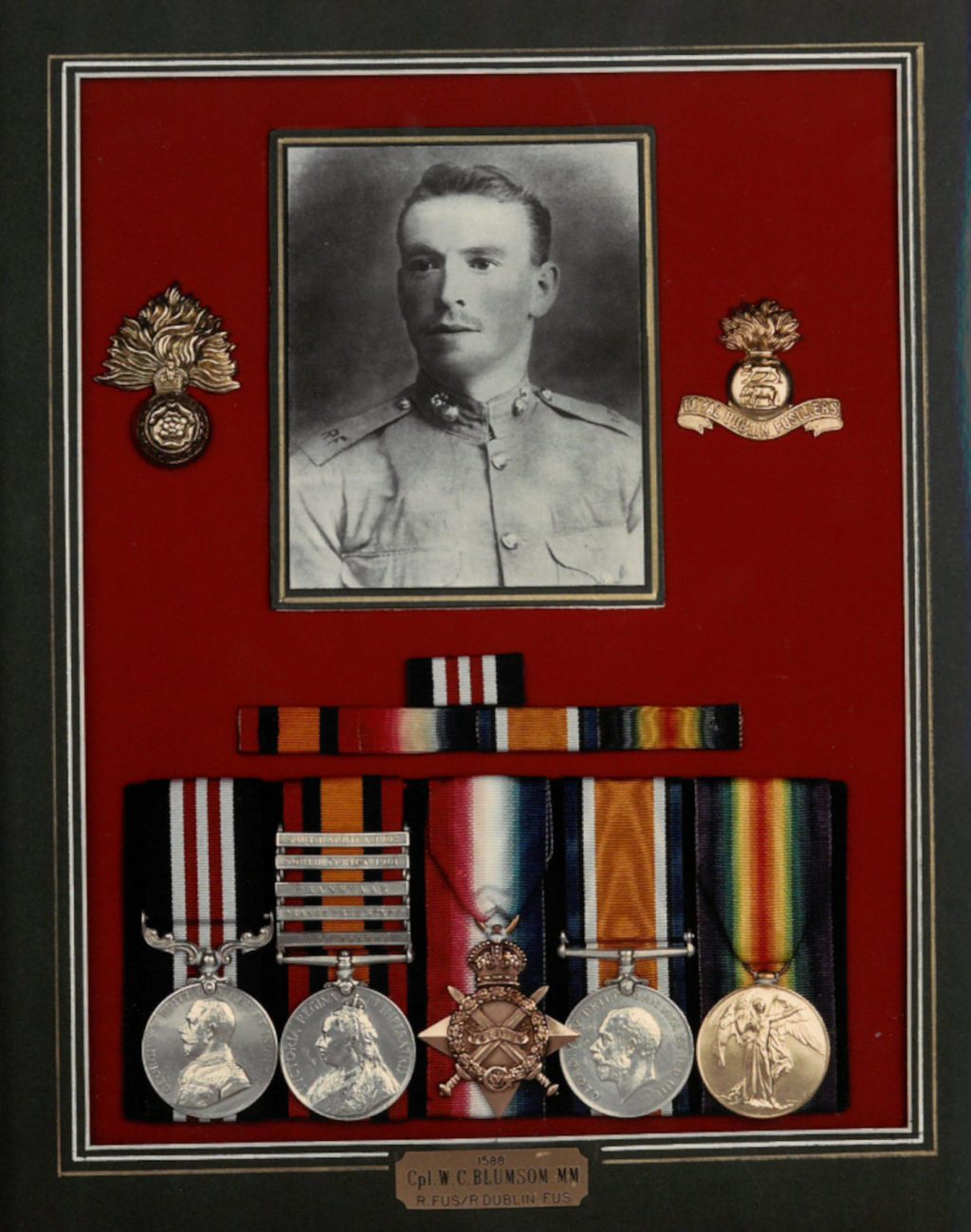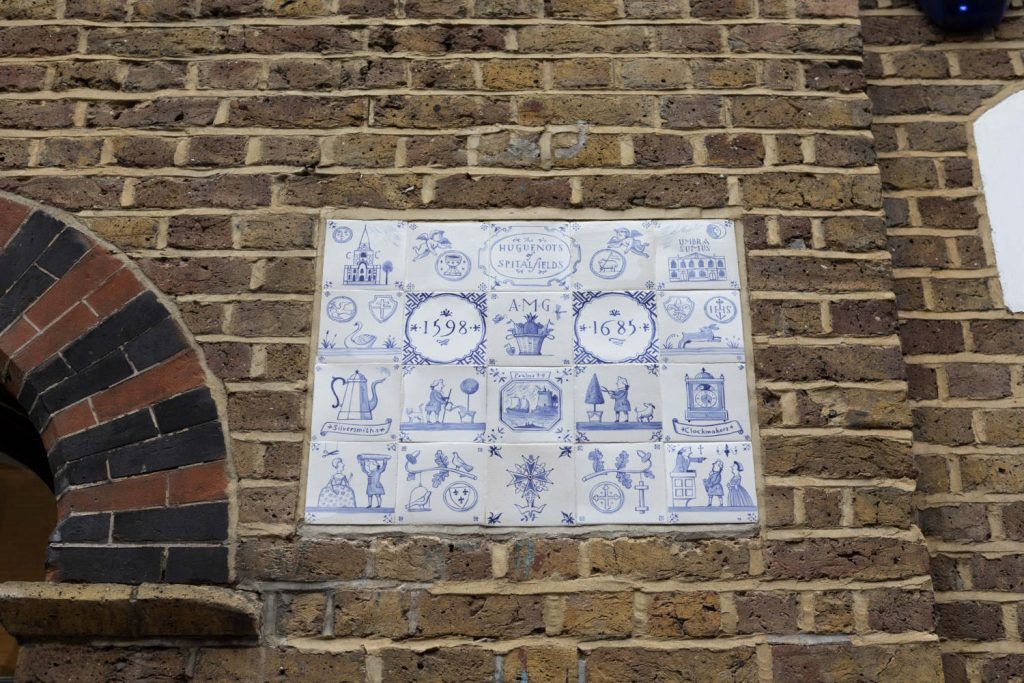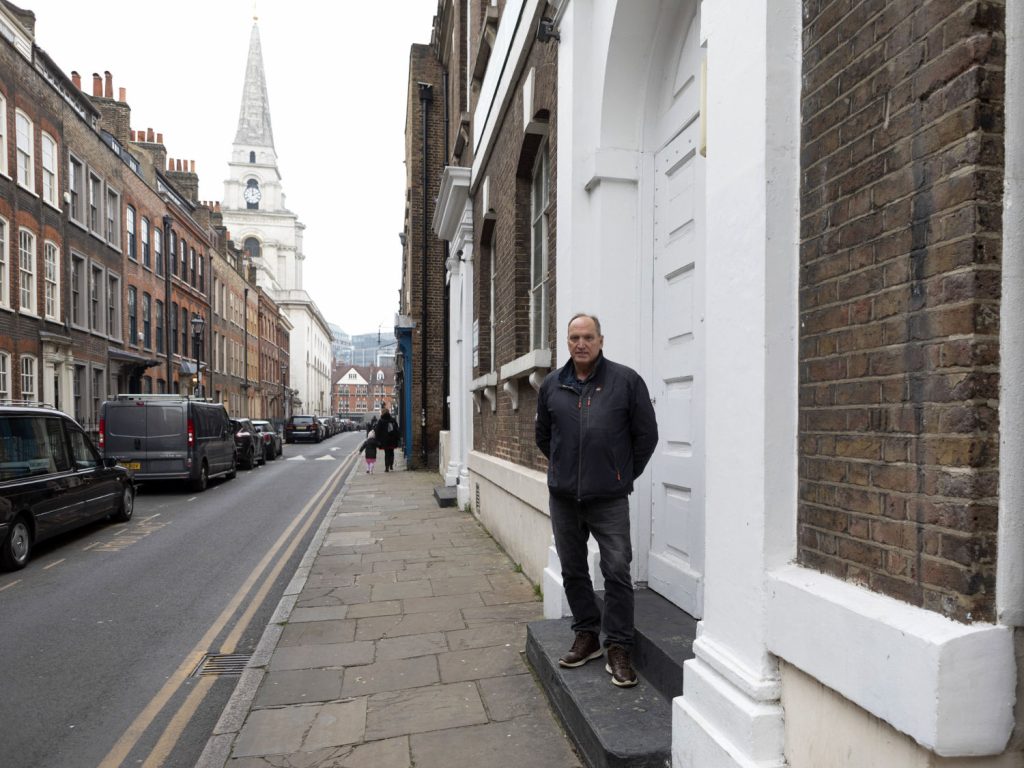Paul Blumsom’s personal pilgrimage into his working class Huguenot history
Paul’s book about his grandfather tells the working class and Huguenot history of Bethnal Green – of refugee silk-weavers, Jack the Ripper, poverty and survival against the odds.
Paul Blumsom’s affinity with his grandfather has become his borderline obsession; they look alike, have similar mannerisms, and share an appetite for adventure. Yet they have never in fact met.
When Paul, now 65, set out to find the man that was his grandfather, he didn’t know he would end up unearthing a family history tracing back to the Huguenot refugees who found work and sanctum in Spitalfields.
Visiting his grandfather William Charles’ place of rest at a common ‘pauper’s’ grave in Nunhead cemetery, Southwark, Paul felt a deep stirring to restore humanity to this man who died quarter of a century before he was born.
Drawing on his skills as a former Detective Constable, so began Paul’s deep-dive into history. But Paul’s part biography, part memoir and part narrative history ‘Fought Like a Lion: The Life of an East End Soldier’ goes beyond the realms of one family.
It is the re-rendering of the broader working class narrative of Bethnal Green.

It all began for the Blumsoms (then the Dubocks) in the shadows of night on the French coastline. As Huguenots, Daniel, his wife Judith and their son fled impending religious persecution as castaways on boats in 1685.
In scenes eerily familiar with the seemingly modern phenomena of refugees arriving on the shores of Dover, Paul describes the way families were ‘manhandled through a small trapdoor into the bilge of the vessel, below the waterline.
There…the refugees would keep their heads…[down]…to avoid injury from the thrusting of swords between the wooden planks of the deck by the inspectors, keeping perfectly still and quieting the young ones in wet, cramped and extremely uncomfortable conditions before making the hazardous crossing.’
Against all odds, the Dubocks survived this unimaginable ordeal, joining ghettoised areas in Canterbury.
Two generations later the family took to the East End bringing their skills in silk-weaving with them.
In his book Paul describes how ‘The trade would be passed from father to son, mother to daughter, the whole family involved in the production of silk goods.
In general a weaver had two looms, for his wife and himself, but it was not uncommon to have four looms. Children as young as six or seven would be put to work winding silk using a quill or bobbin…’
But soon poverty and deprivation ravaged the family, as the decline of the industry swept through the East End like the plague.
Due to poorly thought out regulation, much of the silk-weaving industry relocated to the North. The working classes’ lifelines were being squeezed dry, consigning them to destitution.

Mary Ann, Paul’s four times great grandmother and member of the fourth immigrant generation, was the first of the Dubock’s to marry outside of the French Protestant community.
Paul describes his discovery of her fate to the Waterloo Road Workhouse, Bethnal Green in 1851 after the death of her husband as ‘heart-breaking’.
His three times great grandfather Benjamin Timothy was also a silk weaver. Born at Grants Yard, Shoreditch, he lived in Sweet Apple Court, Bethnal Green by 1841 with his wife and seven children.
Contrary to its saccharine name, Dr Hector Gavin described the court as such: ‘The gutter in the centre of this court was very filthy; garbage was strewn about, the privies were quite full and dilapidated.
[…] From the dripping of the water pipe the place had become damp, and on opening the door, a horrid odour of nastiness, like putrid paste, was found to pervade the room.’
Paul’s three times great grand uncle Henry Blumsom and two times great grand uncle George Blumsom both died in relatively more comfortable circumstances as patients in the French Protestant Hospital.
The hospital built in 1865 – now Mossbourne Victoria Park Academy on Victoria Park Road – was established by the wealthy Huguenot philanthropist Jacques de Gastigny. It enabled Henry and George to receive care as Huguenots that they otherwise would never have been able to afford.
Parallel to this thread in history lived Paul’s first cousin four times removed, also named William Blumsom. He was the landlord at The Commercial Tavern in 1887, which conveniently sat opposite the police station where the murders of Jack the Ripper were under investigation.
It is a haunting but not unimaginable thought that the pub was the murderer’s local haunt, and that William unwittingly pulled pints for both the Ripper and the Ripper-hunter simultaneously (with the dexterity that publicans tend to have).
Soon after, the demise of the silk industry was replaced by boot-making, but in the cruel repetitious cycles of history, this too collapsed.
Paul states that it is this protracted context that led to his grandfather’s decision – at the tender age of 16 – to sign up to the army in1898.
Promised bed and board, regular meals, the opportunity of travel abroad, and a pair of shiny new boots he would never have been able to buy independently, it gleamed with the promise of escape.
Paul’s connection to this history has been enhanced by a personal pilgrimage, by walking in the footsteps of those who came before him.
As well as visiting the battlefields of Belgium and France where his grandfather fought, he has time travelled through the ages, treading the streets of Bethnal Green to inhabit the exact spaces that his ancestors once did.

William Charles attended Mowlem Street School (now known as Mowlem Primary), just south of Regents Canal and Victoria Park.
Paul recently found his grandfather’s name on the Roll of Honour from the Great War.
Even though the school was refurbed in the 1970’s, its original Victorian annex is still there. Paul imagines William bouncing off the walls in the playground, playing with classmates ignorant to his future that would take him to battlefields as far flung as Egypt and Palestine.
Paul’s research has led him to a newfound personal cognizance. He describes an aspirational attitude shared amongst his family, which he now ascribes to a bloodline of hardgraft.
‘It seems heritage – not in terms of nature and nurture – is important in the makeup of our family, although we weren’t conscious of it. Now, it all makes sense.
My father used to say this phrase which sounds like ‘san fairy anne’. Now I understand that it’s an anglicisation of the French phrase ‘c’est fait rien’, overheard from French civilians that the British Tommies came into contact with. So it comes from my grandfather afterall’.
Walking through Spitalfields, Paul couldn’t ‘help but feel that the silk workers from yesteryear would have found their own demographic within this climate of consumerism. The demand for artisan-made and hand-crafted textiles grows, the pursuit of vintage and retro clothing likewise, providing a ready-made market for the weavers.’
Paul describes how this project has fortified a deep empathy. ‘It’s made me think about how class affects entire family cultures, and the ways it shapes how we interact with the rest of the world’.
And primarily, how politics has heavy-handed implications. In the era of the silk-weavers, ‘it hadn’t occurred to the political economists along with the newly-enfranchised, ‘un-landed’ middle class that the free market policies so aggressively pursued by many of them might be instrumental in perpetuating casual working, starvation wages, sweated labour and frequent unemployment, conditions that would contribute to the impoverishment of the labouring classes.’
Just like his family members then and workers today – whose trades are deployed to more competitive markets overseas – it is evident that ‘the poor have no control over their own destiny’ and that ‘far greater forces were at work, largely that of laissez-faire economics.’
As well as a personal reconciliation of self, Paul’s pilgrimage through time shows us the significance of telling otherwise untold stories.
Paul’s grandfather, and those that came before embody the working class tale of Bethnal Green: of hard-work and of survival against the odds.
Paul is looking for a publisher for his book ‘Fought Like a Lion: The Life of an East End Soldier’. Please get in touch at hello@bethnalgreenlondon.co.uk for more information.
If you enjoyed this article, you may enjoy our piece on the Brick Lane Jamme Masjid sundial.


How wonderful to find this site!
I would like to get in touch with Paul as l am very interested in my Dubock family history.
My family lived in Spitalfields and for many generations were involved with textile manufacture.
My family are from East London. Prichards Road area. They were the Royffe Family who came over during the purge of the Huguenots. I am the direct decendent of Sophia Royffe from my Father’s side of the family. I want to trace more of my heritage to pass on to my grandchildren. I am 76 but have an excellent memory of those times when I lived at 22 Prichards Road with my Great Aunt.
I intend to pass on the history and memories to my grandchildren and ensure that they know where their history lies. I lived in Prichards Road backing onto the gasometers and hearing the watchman’s dog bark in the afternoons when I was laid down for an afternoon sleep. My great uncle made hand made leather soccer balls and the house smelt of leather as it soaked in water to make it easier for him to work on. Some memories never fade. There was a grape vine which I was told came with my Gran from France- I had to collect horse dung so they could use it as manure for it. If I can connect with anyone who has any memories of that time I would be grateful